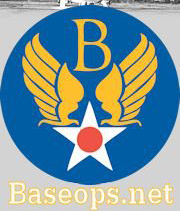As a trainer, and particularly with TD Fitness, my goal is to help as many people as possible. But I’m limited in reaching everyone, and there simply aren’t enough hours in the day to apply the individualized approach that everyone needs (and deserves) to the number of people that I want to help. Realizing that each individual has a different history, ailments, strength imbalances, and different goals, I do not apply cookie-cutter approaches like some trainers and online services.
In my experience, however, I’ve noticed that here are some ailments many of us suffer from. The most notable are lower back pain, shoulder pain and knee pain. Although there are different variants of each of these ailments, the fact that so many people suffer from pain in one or more of these areas shows that there are things that we should be aware of as a population. This article focuses on these common problems and sheds some light on causes and possible ways to address them through physical activity.
Lower Back Pain
Just about all of us have suffered from lower back pain at some point. Lower back pain is a catchall term describing the ailment that can be caused by a muscle strain, disc dysfunction, or tight muscles among other things. It’s hard not to notice; lower back pain can be debilitating. We don’t truly appreciate the role of the core and lower back in everything we do until it pains us to perform routine tasks.
The muscles of the lower back do not work alone. They are part of a greater core musculature that includes those muscles in the side and abdomen. Imbalances in these muscles (stronger abs and weaker lower back muscles, for example), or weakness in adjacent muscles can cause low back pain. Tight hamstrings that pull on the torso from behind, causing the hip flexors to lengthen and the lower back to tighten could also contribute to the aggravation. Yet another cause could be tight hips and glutes.
Low back pain could likely be an indicator that you need to incorporate more stretching exercises into your workout. Focus particularly on the hip flexors and the posterior chain – the glutes, hamstrings, and calf muscles. Once pain stops, it doesn’t mean the problem is gone. Muscles could still be weak and there may be problems in the future. In this case, you may want to consider a core strengthening program.
Because of the different variants of lower back pain, you should seek a proper medical diagnosis prior to beginning any physical activity. Once cleared, begin with stabilization exercises such as planks or bridges to build core (and lower back) strength. When you’re comfortable, you may then move to strengthening exercises for the lower back (back extensions or good mornings) and abdominals (barbell rollouts or TRX crunches). Once proper stabilization and strength are developed, you may perform more challenging exercises such as stiff-legged deadlifts.
Shoulder Pain
The shoulder is one of the most misunderstood and misused joints by frequent gym-goers. We treat it as a weight-bearing joint, using the shoulders to lift heavy weights overhead. But the shoulder is actually a mobility joint. The shoulder joint has a wide range of motion making it more susceptible to injury when overloaded it with weight.
Along with our tendency to overstress the joint, most of us don’t even realize that poor posture also affects the shoulder musculature. As a “push-oriented” society, we have developed the muscles of the chest more than those of the back. We’ll often perform twice as many sets of chest exercises than back exercises when the ratio should actually be reversed. The overly developed chest muscles cause an imbalance that pull the shoulders forward, cause muscle tightness in the front, weakness in the rear, and create a hunched posture.
As always, proper medical diagnosis is key, but barring injuries that limit range of motion, exercises using light loads should be used to build strength around the shoulder joint. It’s best to do these exercises while you’re healthy, beforeshoulder injuries develop! (View the shoulder routine I perform weekly to build muscle around the joint.) Even exercises without weight, such as wall slides, can be challenging.
When performing overhead pressing movements with excess weight, consider full body movements such as the squat-and-press. Because these types of movements use the lower body to generate over half of the force required for overhead pressing movements, you can (and should) use the momentum to perform the exercise. An added benefit is that you’ll burn more calories with this full body exercise.
Here are some other ways to protect your shoulders when lifting weights:
- Bench press – keep the upper arms close to the body or prevent the elbows from traveling below the torso. Using a smith machine or performing bench presses on the floor will help with this.
- Pec Dec Flys – Do not let the elbows travel behind the torso.
- Shoulder Press and Lat Pull-downs – perform these movements in front of the face. Vertical pushes and pulls behind the neck place the shoulder in an awkward position. You may also modify pull-downs by using an underhand grip.
Knee Pain
Knee pain can be caused by overuse, muscular imbalances, training on hard surfaces, or by wearing inappropriate footwear. The amount of force absorbed by the knee during jarring activities such as running and jumping is far greater than we realize. Heavy-weight squats and squatting with improper form can also contribute to knee injury.
The best way to avoid or recover from knee pain is to be smart about your training. Use a logical blend of endurance and cross training and don’t overdo it with any particular type of exercise.
Climbing stairs and decelerating when traversing downhill are typically instances where knee pain is most prevalent. Strengthening the glutes and performing single-leg exercises can help. It’s also important to build the entire musculature surrounding the knee. Squats and lunges, for example, recruit primary and supporting muscles and make the knee stronger when performing forward and lateral movements. By having balanced muscles around the joints you’ll decrease the chance for injury and knee pain. Consider the following tips:
- Unless prescribed by a rehab program, avoid leg extensions as they place undue stress on the knee joint.
- Be careful with deep squats, particularly with heavy weights. Despite popular belief, there is no single “correct” depth for squats. Depth will vary from one person to the next and is dependent on flexibility and leg length. Squatting to a comfortable depth is fine for developing leg muscles.
 Three Simple Ways to Improve Your Diet Right Now
Three Simple Ways to Improve Your Diet Right Now